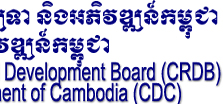CAMBODIA
Macroeconomic
Management in Response to Financial Crisis
Second Cambodia Development
Cooperation Forum
Dr. Hang Chuon Naron
Secretary General, Ministry of
Economy and Finance
4th
December 2008
|
Part I. Impact of the
Global Financial Crisis
on Cambodia
|
Impact of the Crisis
-
There will be some impact,
mostly indirect to the real sector, resulted in lower
GDP growth in 2008 and in 2009;
-
Cambodia’s banking sector,
as a whole, remains resilient, impact is limited to
small banks;
-
Although the foreign
currency deposits experienced slight reduction, credit
to the private sector continues to grow, drawing on the
excess of liquidity of the banking sector.
|
|
Economic
Growth
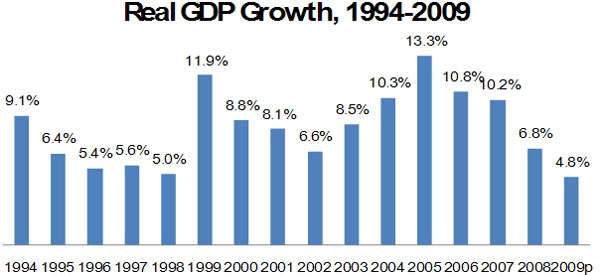
|
|
Cambodia’s
Financial Sector
- Cambodia’s banking system remains sound,
well capitalized and highly liquid.
- The capital adequacy ratio (net assets or
net worth/ weighted assets according to the degree of risks)
was 26% in 2007, well above the regulatory minimum of 15%.
- The liquidity ratio (liquid assets/ total
assets) was 50% in 2007. Non-performing loans (NPLs)
declined from 9.5% in 2006 to 3.4% in 2007 and further to
2.6% in June 2008.
|
|
Liquidity of
the Banking Sector
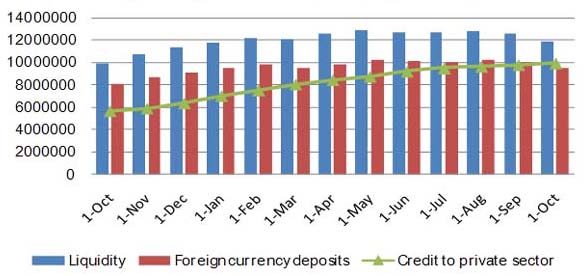
Liquidity dropped by -1.6% in Sept and
-5.4% in Oct; foreign currency deposits dropped by -2.2 in
Sept and -5.4% in Oct, while credit to the private sector
continues to grow by 1.6% in Sept and 1.7% in Oct.
|
|
Tourist
Arrival
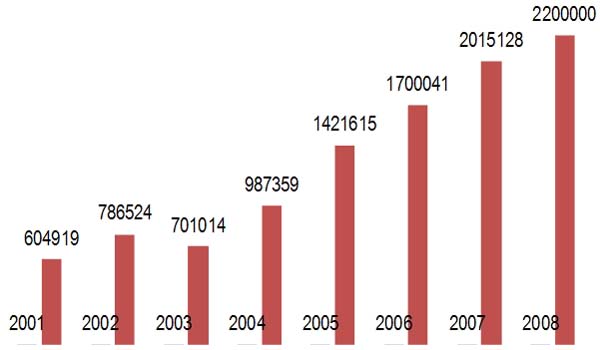 |
Balance of Payments
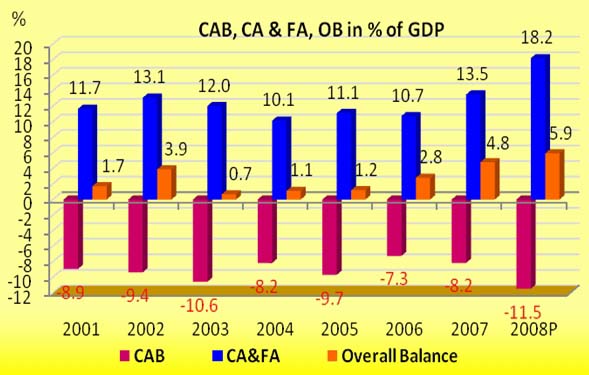 |
|
Macroeconomic Policies
- The 2009 budget provide fiscal stimulus
to sustain economic growth;
- Macroeconomic management requires
balancing between promoting growth and reducing inflation;
- Further strengthening of banking sector,
focusing on improvement in supervision, auditing and
institutional strengthening, will continue.
|
|
Part II. Inflation & Policy
Response
|
|
Inflation
(%), Average, Year on Year
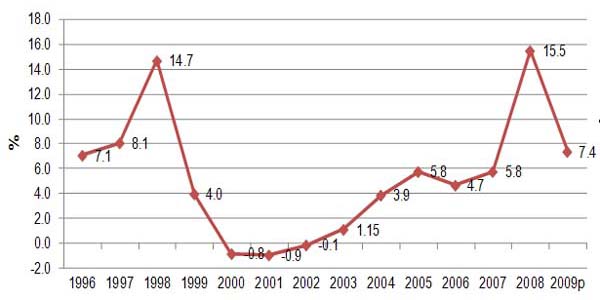 |
|
Trends of
Inflation in 2008
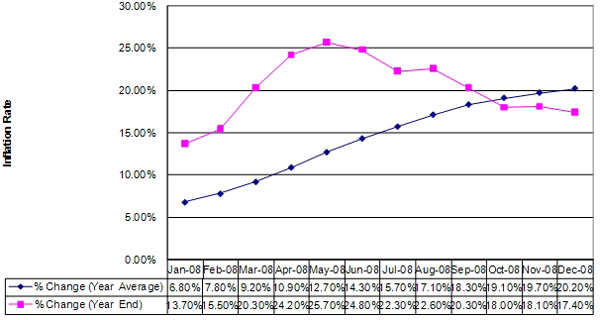 |
|
Causes of
Inflation
- Understanding the causes of inflation is
critical for applying the right medicine to cure it.
- There are 3 types of inflation
- Demand-pull inflation
- Cost-push inflation or supply shock
inflation
- Built-in inflation
|
|
Capital
Flows and Inflation
- In recent years, capital flows have
played an increasingly important role in the balance of
payments.
- Since 2005 the capital and financial
account of the balance of payments rose sharply.
- Capital flows have helped to finance
large current account deficits associated with higher
imports and higher economic growth.
|
|
Forms of
Capital Inflows
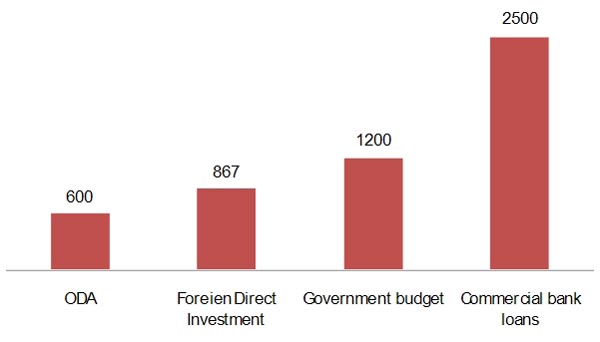 |
|
Capital
Flows and Inflation
- Capital flows have induced growth in the
money supply and have caused inflation to rise, as the
National Bank of Cambodia has intervened in the foreign
exchange market to buy excess supply of foreign exchange in
order to stabilize the nominal exchange rate.
- From mid 2006 to mid 2008, Cambodia’s
international reserve position increased by US$1 billion,
while it took 12 years to increase international reserves
from US$100 million in 1994 to US$1 billion in mid 2006.
|
|
Gross
Foreign Reserves, in millions $
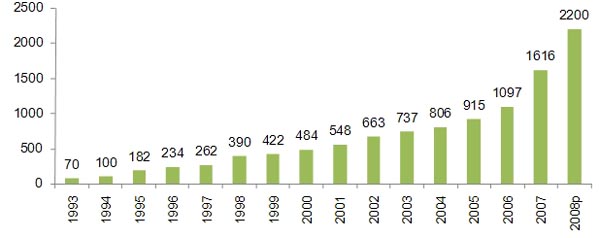
|
|
Graph 1.
Money, credit and inflation
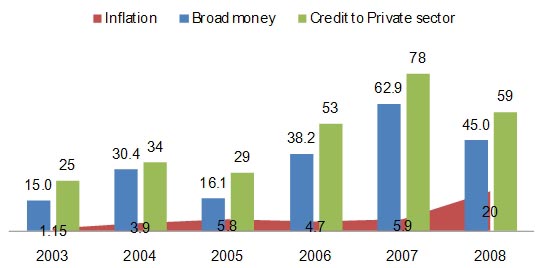
|
|
I. The
Resulting Demand-Pull Inflation
-
Caused by increases in
aggregate demand due to increase in private and government
spending.
-
Inflation is caused by an
increase in the quantity of money in circulation relative to
the ability of the economy to supply (its potential output).
|
|
Trend in
Monthly Exchange Rate
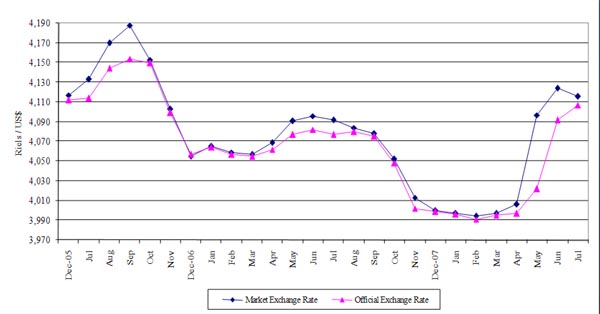 |
|
Measures to
Reduce Bank Lending
- NBC imposed:
- (i) a ceiling of 15% on each
commercial bank’s share of total loans to the real
estate sector, with effect from 26 June 2008, and
- (ii) a doubling to 16% of the
commercial banks’ minimum reserve requirement, with
effect from end-July 2008.
- Relax some restrictions on capital
outflows, by allowing commercial banks to invest excess
reserves abroad.
|
|
Policy
Responses to Inflation
- NBC has taken the following monetary
measures
- Conduct prudent and tight monetary
policy
- Pursue the exchange rate policy of
managed float
- Promoting de-dollarization
- Increase reserve requirement of
commercial banks from 8% to 16% to absorb liquidity from
economy
- Allow financially sound banks with
excess of liquidity to invest some of their assets
abroad.
- Increase minimum capital from $13m to
$36.5m for commercial banks and increase to a minimum of
$7.3m for specialized banks
|
|
II.
Cost-Push Inflation
- Caused by drops in aggregate supply due
to increased prices of input (like oil, food, wages).
- Higher input cost are then passed on to
consumers in form of higher output prices.
- The acceleration in inflation in large
part reflects the impact of higher energy and commodity
prices.
|
|
Oil Price
($/B, Brent, Dubai, WTI)
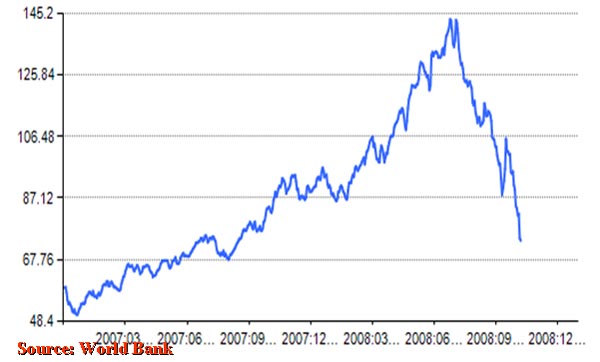 |
|
World Price
for Commodities
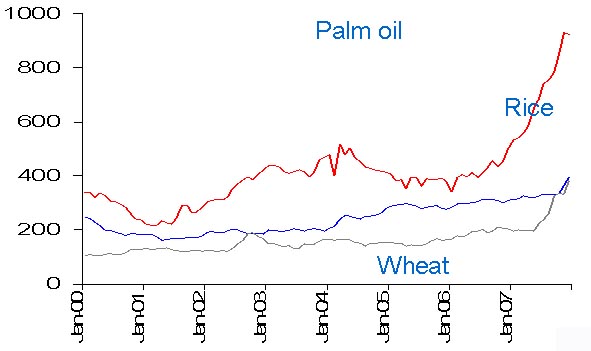 |
|
Fiscal
Measures to Absorb Shocks
- Real wages of civil servants (e.g.
increasing the base wage by 20%, spouse and children
allowances by 100%, and teacher allowances by 10%),
additional 20,000 riels;
- Subsidies to offset higher fuel and
electricity costs;
- Special financing for rice millers to
increase rice stocks and internal distribution systems and
- Reduced taxation on the importation of
agricultural machinery.
|
Fiscal Policy to Curb
Inflation
-
Re-introduce the imports of
food products such as pork
-
Temporarily suspend for 3
years the 1% minimum profit tax for garment factories, thus
allowing for an increase in minimum wage to employees
-
Reduce customs tariffs and
taxes on imports for the agriculture inputs
-
Introduce temporary VAT
exemption on agriculture products
-
Government cuts down on
spending and increases deposits in the banking system.
|
|
III.
Built-In Inflation
- Induced by adaptive expectation, often
linked to the price/wage spiral.
- It’s a vicious circle where employees
demand increase in salary above CPI rate then employer pass
on the extra cost to consumers.
|
|
Policy
Responses to Inflation
- Public awareness campaign, educational
and policies to increase conservation and energy efficiency
- Improving of agriculture policies which
aim to upgrade infrastructure, irrigation systems as well as
providing subsidies toward high-yield and key agricultural
product like fertilizer.
- Macroeconomic policies will be further
tightened in response to generalized inflation pressure.
|
|
Policy
Responses to Inflation
- Strictly maintain the budget within the
framework of the 2008 Budget Law and continue the policy of
non-bank financing.
- In case of increase in necessary
spending, limit current budget surplus to 2.5% of GDP;
- Maintaining the overall fiscal deficit at
around 1% of GDP in 2008 and 2009 to contain inflation
expectations;
- In case of revenue shortfalls, MEF will
propose new saving measure or reduce/cutting non-priority
expenditures.
|
|
Additional
New Measures
- Strengthened the enforcement of property
tax and unused land tax, including implementation of capital
gain tax;
- Continue to implement public investment
expenditures relates to physical infrastructure along with
education and health sectors;
- All government agencies required to
propose new savings measure and collect revenues from all
possible sources;
- Reduce new recruited government staff by
10% for 2009
|
|
Possible New
Fiscal Measures
- Increase excise on liquor and luxury
goods
- Using actual import transaction prices
for assessing taxation, including alcohol, tobacco and
petroleum;
- Introduce VAT for electricity and water;
- Further strengthen collection of stamp
duties on land transactions;
- Introducing a property tax initially in
major urban areas;
- Increasing excises rates, especially on
beers and cigarette
- Replacing current tax incentives with
investment allowances, tax credits, and accelerated
depreciation.
|
|
Food
Crisis=Risk + Opportunity
- Agriculture, which Cambodia has big
potentials, due to the endowment of land and climatic
conditions
- Physical infrastructure, especially
transportation and telecommunications;
- Electrical power and water supply;
- Human resource development;
- Labor-intensive and export industries;
- Tourism, which Cambodia also has great
potentials, notably with the presence of historical and
cultural heritages, tradition and natural sites, such as
forests, lakes, sea and attractive scenery
|
Macroeconomic Management in Response to Financial Crisis |


